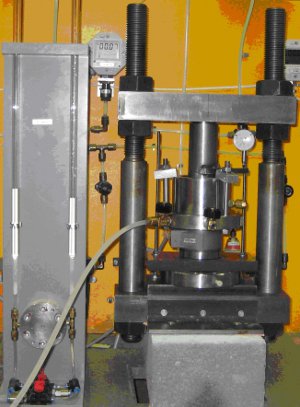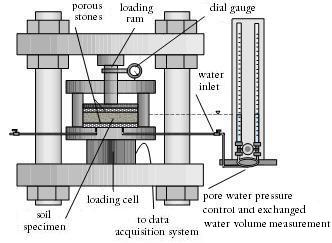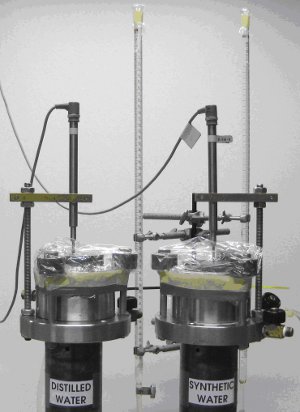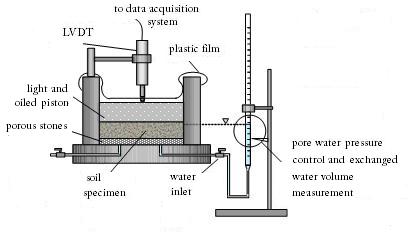The capabilities of the laboratory allow carrying out tests aimed at investigating the swelling aptitude of soils and rocks. When saturated, materials presenting high deformability on hydration will indeed either exert a pressure on the surroundings or expanse in those areas where some free space is left, depending on the confining conditions. In order to characterize such properties, the evolution with the water content of the swelling pressure and strain is measured respectively.
Description of the cells
 |
 |
| Confined swelling test device: picture and schematic cross section of the cell used. | |
 |
 |
| Free swelling test device: picture and schematic cross section of the cells used. | |
Figures present the experimental layout adopted for the swelling tests. High rigidity steel cells with an internal diameter of 78.50 mm are employed to ensure oedometric conditions.
Inside the cell the specimen rests on a porous stone connected to a graduated burette (with a resolution of 0.05 cm3) which allows controlling the pore water pressure and computing the water volume exchange while the material saturates. In this regard, the volume flow during the initial flushing of the system and the evaporation rate, measured during the calibration of the experimental setups, are taken into account.
An opportunely pierced rigid piston, resting on the upper base of the specimen and inclusive of a LVDT (Linear Variable Differential Transformer, with a resolution of 1 mm) connected to an automatic acquisition system, completes the layout for the free swelling tests. The superior parts of the cells are covered by a plastic film in order to limit evaporation from the specimen.
Whereas, when confined tests are performed, the cells are placed in a high rigidity frame ensuring isochoric conditions. The upper base of the sample is in contact with a load ram connected to the frame. The continuous measurement of the vertical force developed, which allows the computation of the swelling pressure, is carried out by means of a load cell placed below the device (the resolution depends on the range of pressure expected for the investigated material).